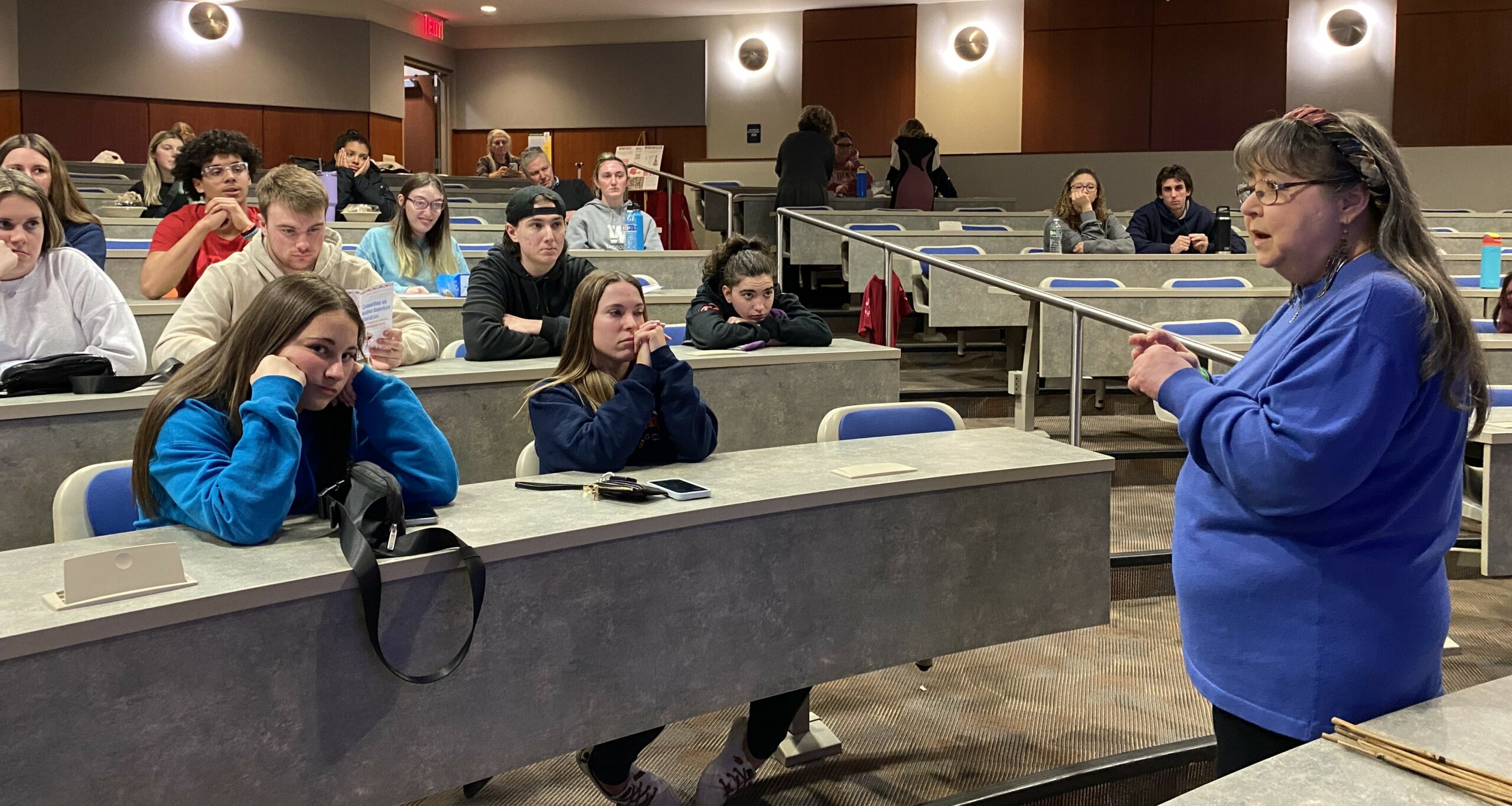 CoNAM co-chair Sandi Cianciulli teaches Widener University students about the Native American history and culture.
CoNAM co-chair Sandi Cianciulli teaches Widener University students about the Native American history and culture.
Students preparing to be educators gathered in a classroom at Widener University Center for Education in Chester February 12 to learn the tragic history of The Loss of Turtle Island. They engaged in an interactive, visual exercise that demonstrates the devastating effects of colonization.
The Eastern PA Conference Committee for Native American Ministries presented that crucial history to 30 undergrad students, from freshmen through seniors, led by CoNAM co-chair Sandi Cianciulli and members Verna Colliver, Terri Leone and Ann Abbott.
Dr. Dana Reisboard and Dr. Donalee Unal**, who both teach in Widener’s education department, organized CoNAM’s visit. Then, a week after the presentation, MaryAnn Robins, president of Circle Legacy, led the students on a tour of the Carlisle (Pa.) Indian School Project, where she is a board member.
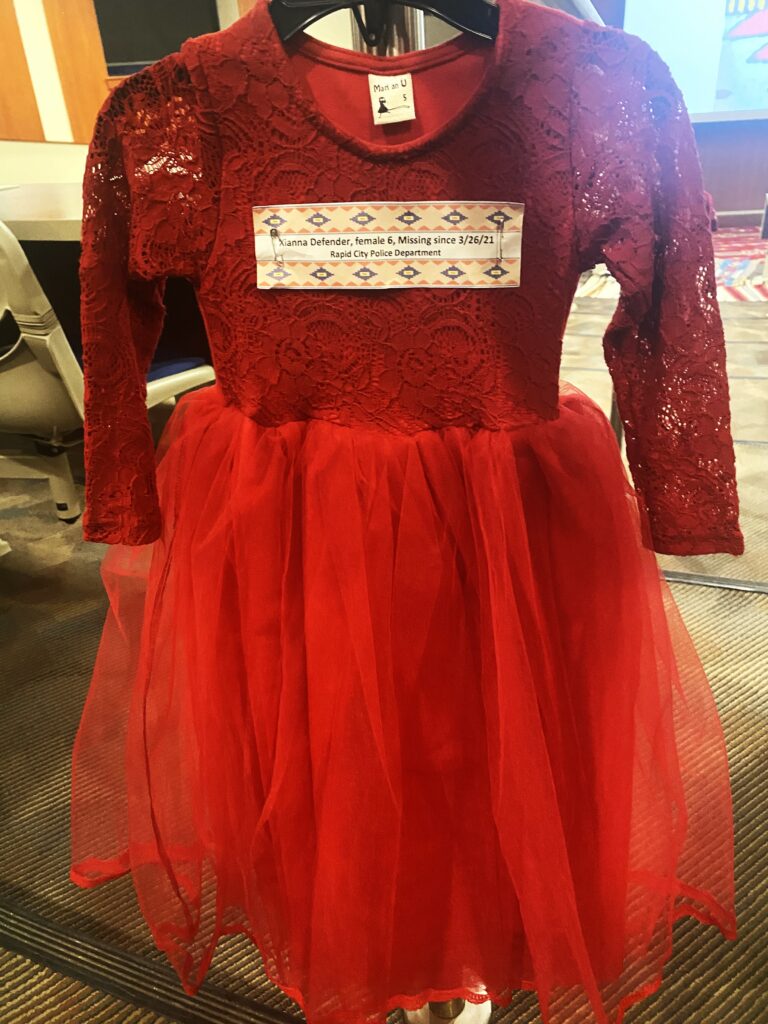
CoNAM members began their evening presentation by acknowledging the Lenape as original inhabitants of the land where they stood. They then requested a moment of silence to remember Missing and Murdered Indigenous People. Red dresses were hung at the back of the room to honor those lives taken, alongside information about this ongoing tragedy for Native communities.
Fully engaged in interactive experience
Fully engaged in the interactive experience, the students watched slides that illustrated the 500-year history of how the Doctrine of Discovery led to taking of the land inhabited by Indigenous Peoples for thousands of years prior to the arrival of European settlers. Groups of students participated by standing on blankets representing North America or reading scrolls that highlighted key incidents and persons involved in the history of colonization.
Those who were given cards with symbolic images showing removal of the Native population by government order, by loss of land or by death due to disease, stepped off the blankets when directed. Blankets were then removed to show the loss of land. At the end, only a few students were left standing on blankets that remained.
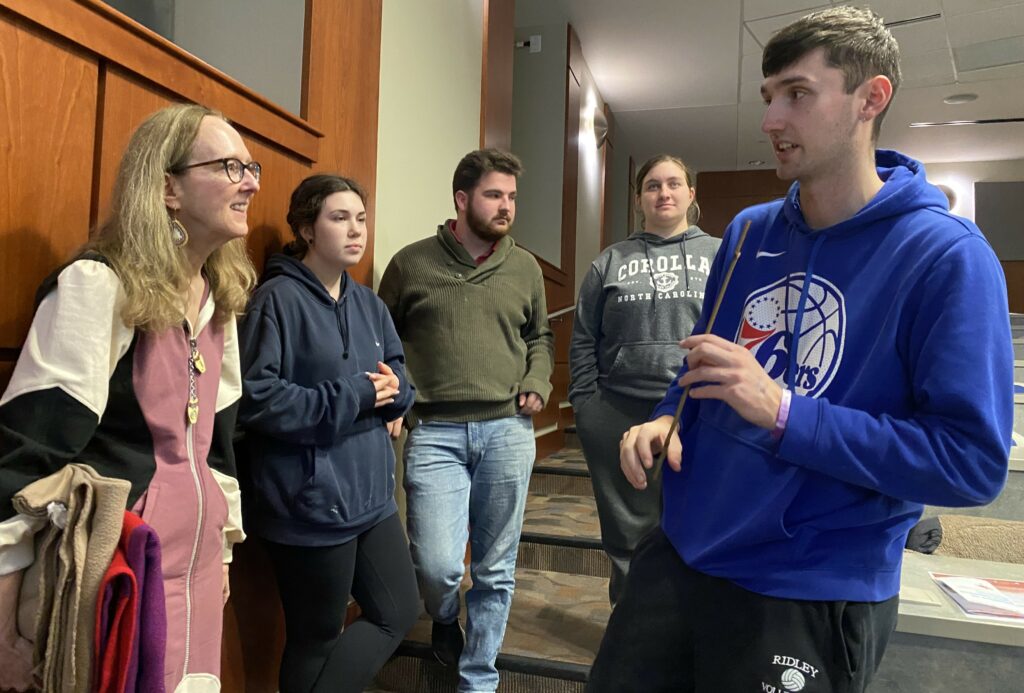
To process their feelings and the impact of the experience, the students formed talking circles to share their responses, passing the “talking stick,” as each spoke in turn. Talking sticks are a cultural tradition that reflects respect and a desire to listen to each other’s views. Many students expressed surprise, even amazement at the new knowledge they received about the brutal history of colonization, having never learned this part of our history in their classes.
Raise awareness of Native Americans history, traditions, contributions
Their surprise fulfills CoNAM’s mission statement: “To raise awareness of the history, traditions and contributions of Native Americans in our churches and communities.”
“It’s crucial for everyone to be aware of our country’s history, enabling them to make informed decisions in their lives and (as educators) in future classrooms,” said Reisboard.
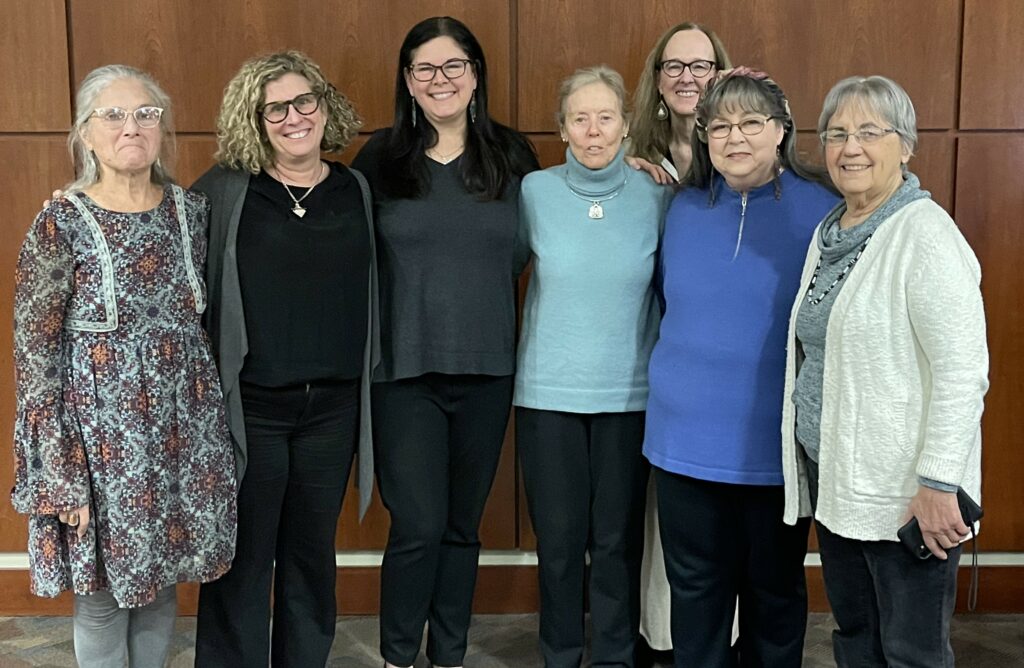
In raising awareness, CoNAM also emphasizes the resiliency of Native Americans who live among us today. While the slide presentation shows the trauma, loss and suffering of Native Americans, it ends with an image of the medicine wheel, a symbol of health and well-being, and with this statement: “We honor the resilience and strength of Indigenous persons and communities as we begin a journey together to address the historical harm and work toward reconciliation and healing. It is a process that begins when we walk together, side by side, to achieve that goal.”
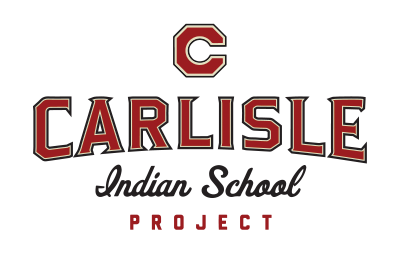
A final activity of the evening was the students’ creation of prayer ties—small squares of cloth tied into small packets with bits of tobacco inside. They took the prayer ties on their tour of the Carlisle Indian School. When they visited the cemetery, the students placed prayer ties at each headstone to mark the graves of children who died as students there.
Given new wisdom for their minds, the Widener students showed their gratitude by using their hands and hearts to leave gifts of remembrance for the Native students left behind at Carlisle.
*Verna Colliver serves as Secretary of EPA’s CoNAM and helps to promote awareness of Native American history, culture and concerns through resources and at numerous events.
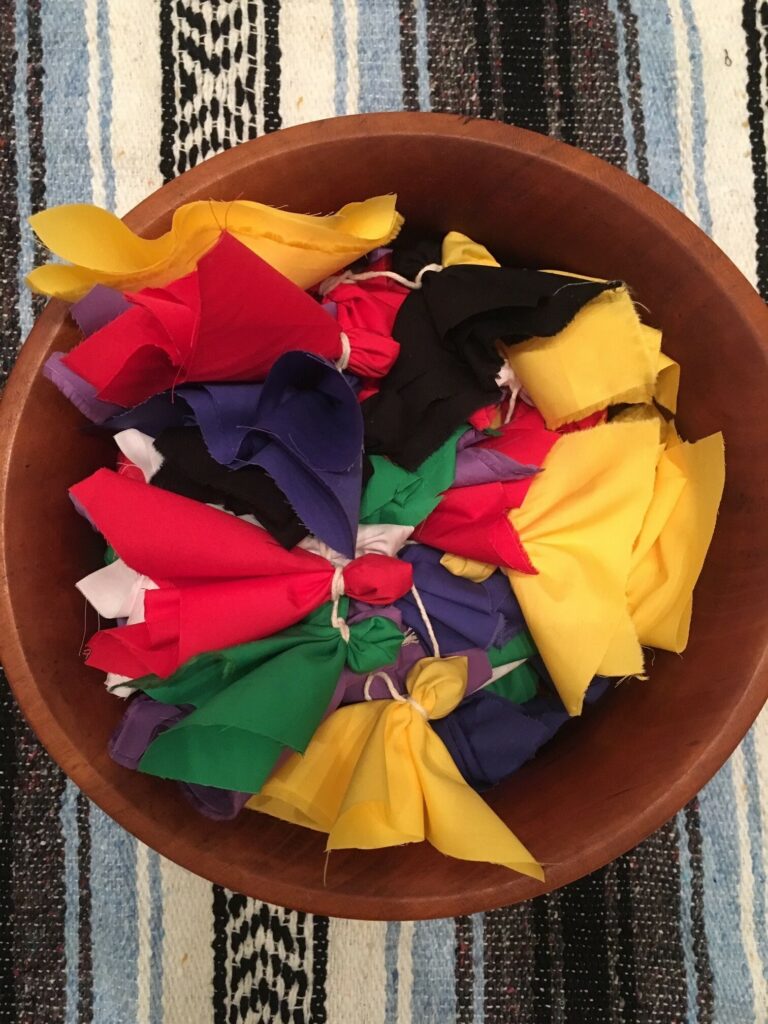
**Dr. Donalee Unal teaches in Widener’s education department and also part-time at Penn State College of Medicine in the Department of Public Health. Her 2021 doctoral thesis is titled “Native Voices: Changing the Narrative.” She shared additional information for this article:
Prayer Ties
Prayer ties are a traditional sacred bundle of tobacco that is imbued with your best wishes, prayers, intentions, and especially as a thank you to an individual that has done something for you. Prayer ties are often made with special intentions: when someone is ill, for the ancestors, for the elders, for the youth, as a sign of friendship, for protection, and when someone has died.
Why I Teach about Native Peoples
The reason I include material about the history (past and present) of Native peoples in my classes is because many students know little to nothing about this history. In the first class I have them go to the website https://native-land.ca/ to learn and then share with the class whose land they are currently on or whose land they grew up on. By having them read evidence-based journal articles written by Native scholars and then incorporating those readings into their written assignments, the students gain a multifaceted knowledge of what Native people have had to endure and continue to endure due to colonization.
Understanding that the disparities that exist among Natives populations are often the result of societal, economic and political factors rather than individual behaviors and choices gives students knowledge they can use in their studies and lives. As a result, in their everyday conversations, they have the knowledge to dispel false narratives about Native people. Most importantly, they learn that Native people are still here and contribute much to the greater good of our society.
Talking Circles
The students in my Talking Circle were very surprised by how many Native people perished as a result of U.S. government policies. They also thought those polices were wrong and obviously harmful. By participating in this exercise they learned how little they were taught in schools about Native people. They learned about the Carlisle Indian Residential School and looked forward to the opportunity to visit.
